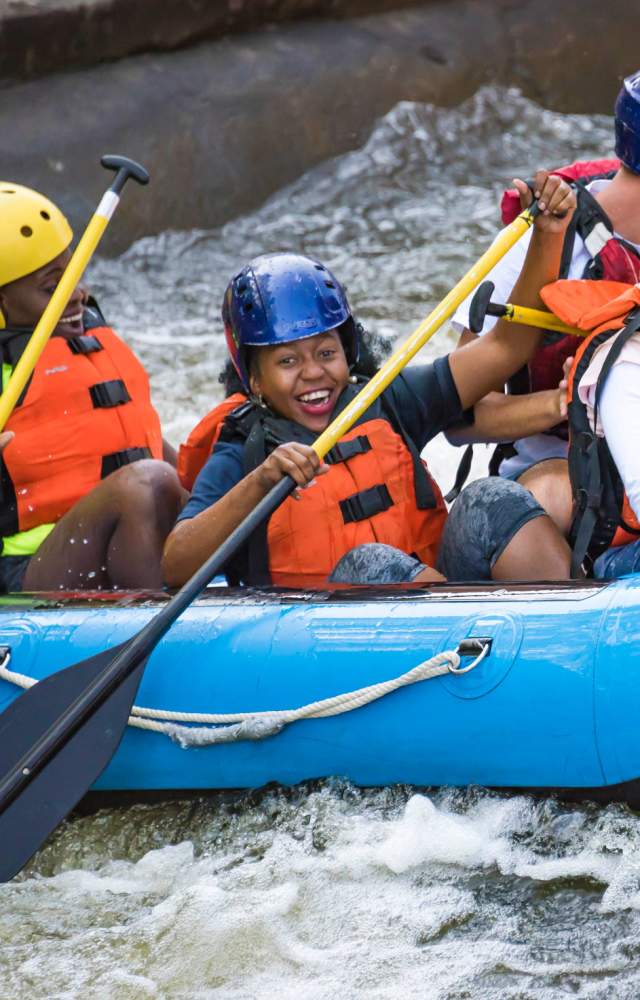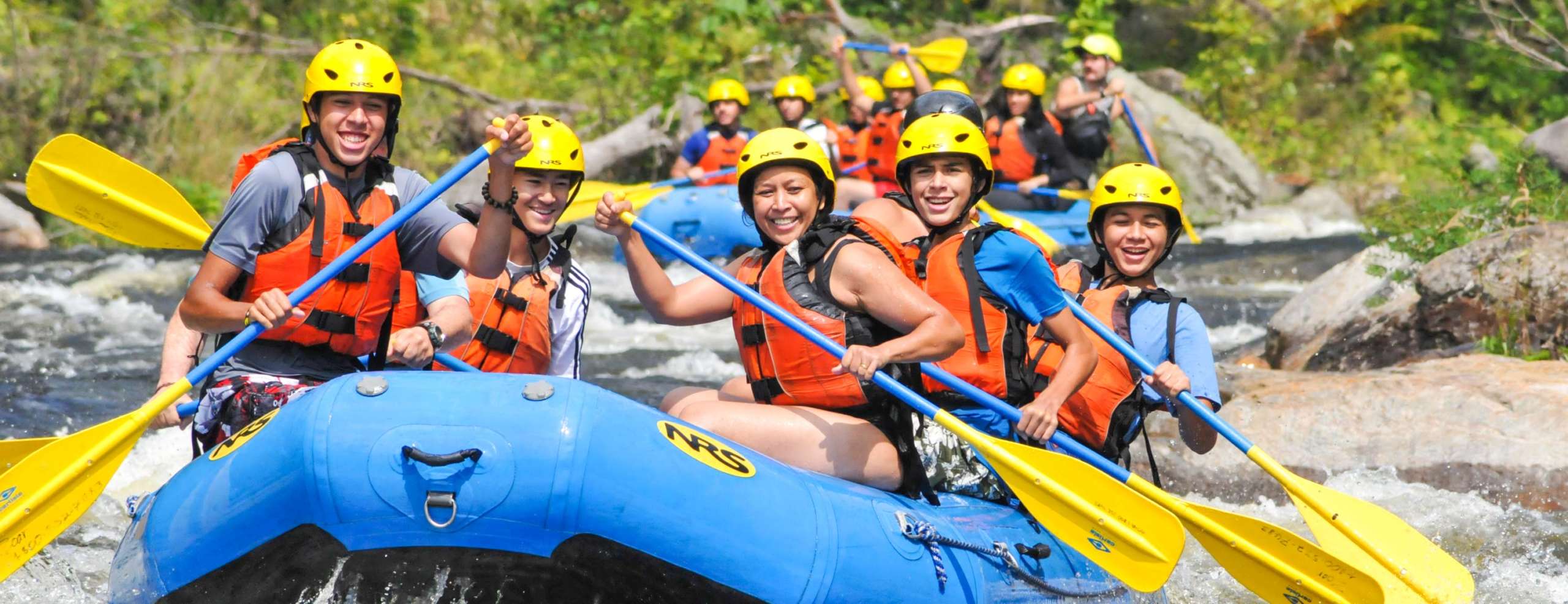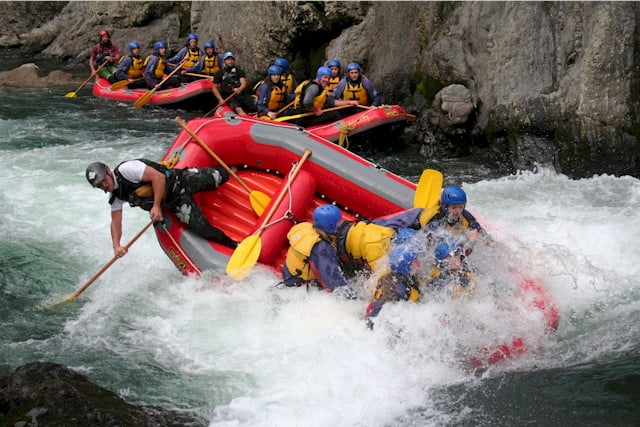Professional Tips for White Water Rafting Colorado Rapids
Professional Tips for White Water Rafting Colorado Rapids
Blog Article
The Ultimate Adventure: Water Rafting Tips and Tricks
Starting a water rafting journey is an awesome experience that requires a mix of ability, preparation, and respect for nature's awesome pressures (White Water Rafting Colorado). As the rush of the river pushes you forward, browsing with spins and transforms, the art of water rafting reveals itself as a test of both physical expertise and mental skill. From choosing the suitable equipment to comprehending the nuances of paddling strategies, the journey down the river holds challenges and triumphs waiting to be dominated. Yet what really distinguishes an amateur from an experienced rafter exists not just in the proficiency of skills, yet in the finesse with which one comes close to the unforeseeable dancing with the currents.
Crucial Gear for Water Rafting
To make sure safety and comfort during water rafting tours, it is necessary to equip oneself with the vital equipment customized to this adventurous activity. The very first and most vital tool is a well-fitted personal flotation protection tool (PFD) or life coat. This is non-negotiable for all rafters, as it provides buoyancy in case of unexpected immersion in water. In addition, a sturdy helmet is vital to secure versus head injuries, specifically in harsh waters or if shaken off the plethora.
Additionally, correct shoes is crucial for preserving excellent grasp and shielding the feet from sharp rocks or unsafe surface areas. Neoprene booties or water footwear are suggested for this function. It is also suggested to put on quick-drying garments, such as a wetsuit or rash guard, to manage body temperature level and stop hypothermia in cold water problems.
Finally, a reliable paddle is essential for navigating through the water effectively. It needs to be light-weight yet durable to hold up against the roughness of rafting. By purchasing these crucial items of gear, rafters can appreciate their experience on the water with confidence and assurance.
Choosing the Right Rafting Course
When preparing a water rafting adventure, choosing the appropriate rafting path is essential for a pleasurable and secure experience. Aspects such as the level of problem, water problems, and the length of the course ought to all be taken into consideration before beginning on your trip.
First and leading, analyze your group's skill level and experience. Various rafting courses are classified based on difficulty levels ranging from Course I (very easy) to Course VI (dangerous and incredibly tough) It is vital to pick a course that aligns with the abilities of all participants to guarantee everybody's security and satisfaction.
In addition, consider the water conditions of the route. Some routes may have calm waters suitable for beginners, while others may have strong currents and challenging rapids that require advanced abilities. Researching the water degrees and possible threats of the course ahead of time can aid you make an educated choice.
Finally, think about the length of the rafting route. Longer routes may call for even more time and stamina, so choose a route that fits within your team's duration and physical abilities. By very carefully choosing the ideal rafting course, you can set yourself up for a awesome and remarkable experience on the water.
Security Precautions on the Water
Considering the importance of picking the ideal rafting route for a secure and satisfying experience, it is essential to focus on security precautions on the water to minimize prospective risks and make certain an effective adventure. Prior to starting a water rafting journey, make sure all participants use correctly suitable personal flotation protection gadgets (PFDs) and helmets to secure against mishaps. It is essential to pay attention attentively to the overview's safety instruction, which normally covers paddling techniques, what to do in instance the raft turns, and how to help others if required. Preserving interaction with the guide and fellow rafters is crucial throughout the journey to work with movements and respond without delay to any type of guidelines or signals. In case of a person falling too far, follow the guide's instructions for swift and effective rescue procedures. Last but not least, be aware of the water conditions, such as challenges and rapids, and adjust your paddling techniques appropriately to browse securely through the training course. By adhering to these security preventative measures, you can boost the total experience and minimize potential blog risks while water rafting.
Understanding Paddling Techniques
Establishing efficiency in paddling strategies is essential for navigating via varying water conditions and guaranteeing a successful water rafting experience. White Water Rafting Colorado. Proper paddling not just assists in guiding the plethora effectively but additionally adds to the total coordination and teamwork needed for a safe and enjoyable trip
Among the essential paddling methods is the forward stroke. This stroke involves my response dipping the paddle blade fully into the water and drawing it back alongside the boating, supplying propulsion and steering. The backwards stroke, on the various other hand, is vital for reducing or turning around down the boating. By understanding the forward and in reverse strokes, rafters can anchor efficiently manage the speed and instructions of the boating.

Tips for Handling Rapids Like a Pro
To master browsing challenging river problems, proficient water rafters use their understood paddling methods with accuracy and skill when managing rapids like skilled professionals. When facing rapids, it is vital to keep a solid and collaborated paddling rhythm. This rhythm helps the boating keep its course and stability amidst the unstable waters. Additionally, it is necessary to expect the activities of the plethora and adjust quickly to altering problems. Experienced rafters use their understanding of river characteristics to proactively readjust their paddling method, making certain effective steering through rapids.

Verdict
To conclude, water rafting requires essential equipment, careful route option, security precautions, mastering paddling strategies, and managing rapids with competence (White Water Rafting Colorado). By adhering to these tips and techniques, adventurers can ensure a effective and satisfying rafting experience on the water. Bear in mind to always focus on safety and security and be planned for the obstacles that come with navigating through rapids. With method and understanding, anyone can become an experienced water rafter.

Thinking about the importance of picking the ideal rafting path for a pleasurable and safe experience, it is necessary to prioritize safety and security precautions on the water to mitigate possible risks and make certain an effective adventure. Inevitably, developing paddling strategies is crucial to a thrilling and effective water rafting experience.
In verdict, water rafting needs essential gear, cautious route choice, security preventative measures, understanding paddling methods, and managing rapids with expertise.
Report this page